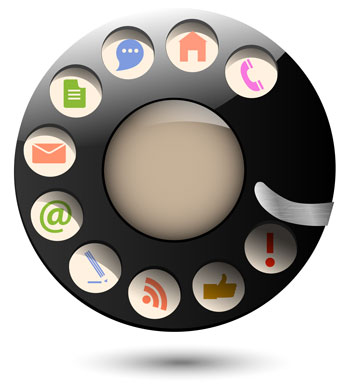Are Browser Requirements Okay?
 It’s Not The 90’s… Browser Requirements Are Not Okay
It’s Not The 90’s… Browser Requirements Are Not Okay
Every so often we still run into a website that tells us that it is best viewed with a certain browser, such as Internet Explorer. Or worse, the message informs us that we cannot use a service on the site without using a particular browser. While there are a few cases that this may be warranted, such as the most up-to-date version of a browser, generally it’s not poor website practice to tell a website visitor they need a certain browser to use a website. A website should be built for all possible technology.
There Are A Few Reasons Browser Requirements Are Not Okay
1. Lots of Devices
Once upon a time you probably viewed the internet using a PC, or maybe a Mac. Available technology was somewhat limited. You could probably install a given browser if a site required it. However, these days a person may be looking at a site from any number of devices and from one of dozens of browsers. The ‘required browser’ may not be an option to them.
2. Mobile-Friendly
Not only do modern internet users expect a website to work on their own computer and browser of choice, but they fully expect a website to be easily viewed on mobile devices and tablets. If your site is not usable with Firefox or Chrome, the likelihood of its use on a mobile device is greatly reduced. And you want your site mobile-friendly.
3. Technology is Better
In the late ‘90s, we were somewhat limited by both bandwidth and what technology we could use to display websites. Browsers often differed dramatically in how they rendered a given piece of code. While that is still sometimes the case, technology is much improved in all major browsers. Getting them to display similarly is not as much the challenge as it once was.
4. Loss of Customers
Any time you place a barrier between your website and your customer, you’re going to lose people who would otherwise be using the website and your service. Its better to put the programming time into setting up a website to be usable for all devices. If your website does not appear correctly on all devices its time to call in a professional website development company like Appletree MediaWorks to fix your website.
[space20] [alertbox color=”blue”align=”left”]If you’re worried that your site is an older one and may not play nice with all browsers, contact us here at Appletree MediaWorks, LLC and we’ll help you get things straightened out.[/alertbox]
Designing for All Devices
Why You Should Be Designing for All Devices
When you settle down to browse the web, you may be doing so from a conventional desktop PC with a widescreen monitor, you may be glancing at Facebook from a 7 inch Android tablet, or you might be checking out an address from your iPhone. For designers this incredible range of options in which to view a website means that a whole new way of thinking about web design is required. As the people responsible for setting up what a user sees, we have to think about the size of a device and what is important to the visitor using that device.
Once upon a time, the average screen size was relatively standard. Times have changed rapidly, and for today’s designer the end product may need to be displayed on a 4 inch wide screen along with a 23 inch screen all on one site. Not only do screens differ in size and how they are used, but they can also be turned from landscape to portrait in one motion, creating a whole new challenge for design and layout.
In the past we’ve designed for a vertical scroll, but now Windows 8 users are panning to the right for a different use of the touch-screen mechanism, an option that some viewing screens have, while others do not. Good design habits in the past become essential now, such as working within a grid system to keep shifting content moving in a controlled and coherent way.
As technology continues to march forward, new features are always popping up. To give an example, devices with Windows 8 have live tiles for apps – the new way to notify followers that their favorite organizations have something to share with them.
High-Density Displays
“Retina” is Apple’s brand name for its new double-density screens, but other manufacturers are creating similar displays under their own names. The technology is used in iPhones, MacBook Pros, and other high-end devices.
The device reverts to a standard resolution of 1,440×900 but the additional pixels can be used to make fonts and graphics appear smoother. While not everything caters to them now, these double density screens will eventually migrate to all devices. There is little reason to fret now, but there’s no harm in some forward planning on how to tackle the new challenge.
Speed
Many users will be using smartphones or tablets on slower mobile networks with limited bandwidth availability, so detecting the connection speed may ultimately be more beneficial than determining the pixel density. For this reason, a website must be optimized for page loading speed – a focus that we as designers shrugged off through the years, as broadband became mainstream. But even on tiny devices, fast and optimized pages lead to higher visitor engagement, retention, and conversions. There are tools designed to measure and help maintain speed optimization. Google’s PageSpeed Insight products will help you identify performance best practices that can be applied to your site, while its optimization tools can help you automate the process.
With continually enhanced technology and all manner of devices in which to use it, design will continue to be a challenge. Foresight and preparation will head off new display surprises and make it easier for us here at Appletree Mediaworks to create a perfect design for you, no matter what your preferred device.





